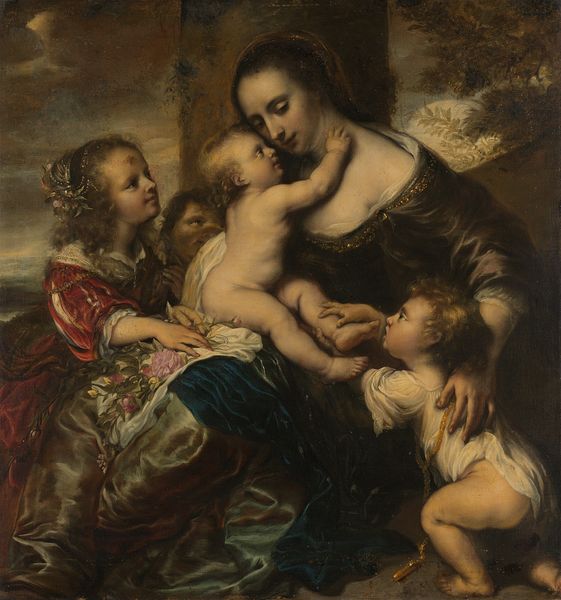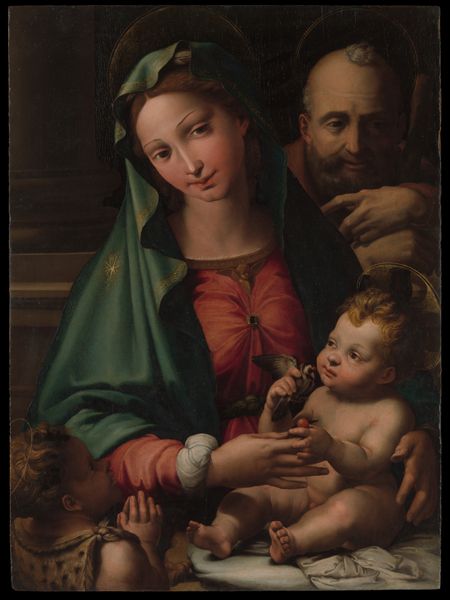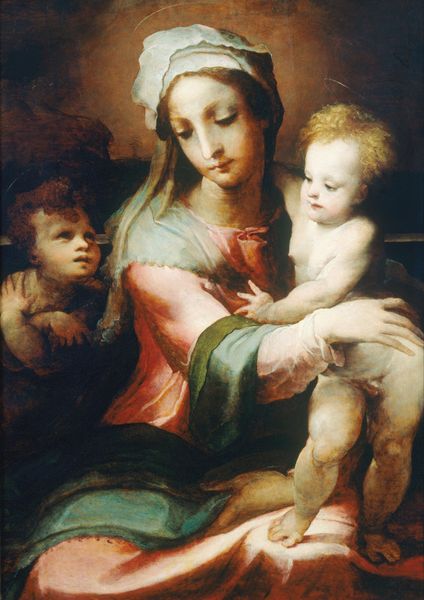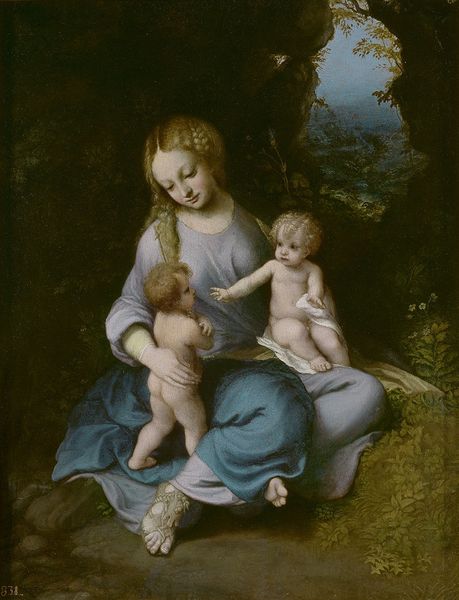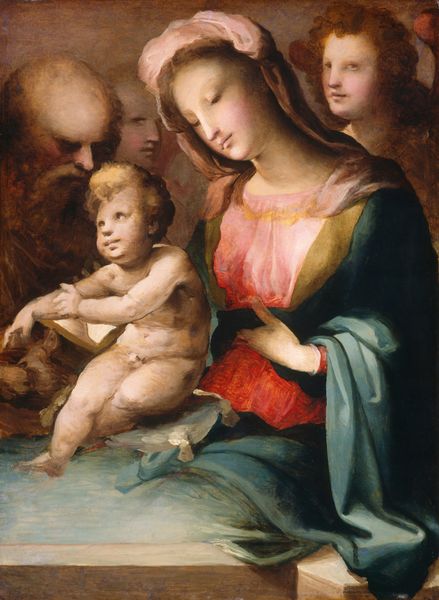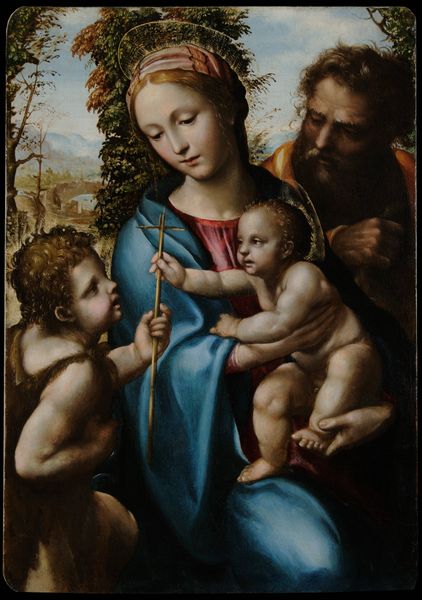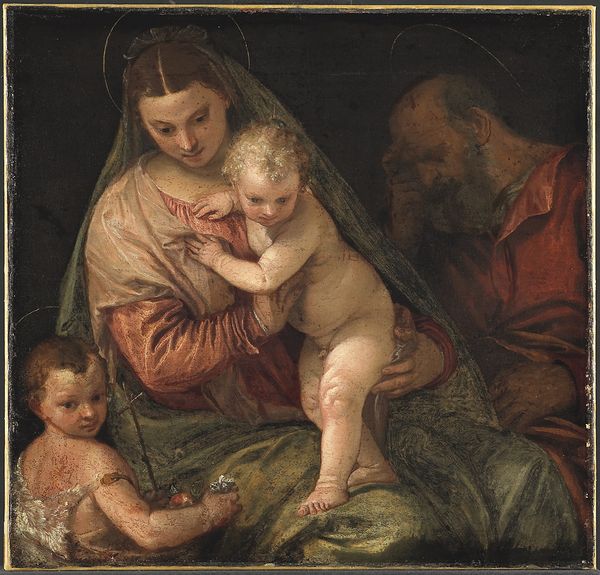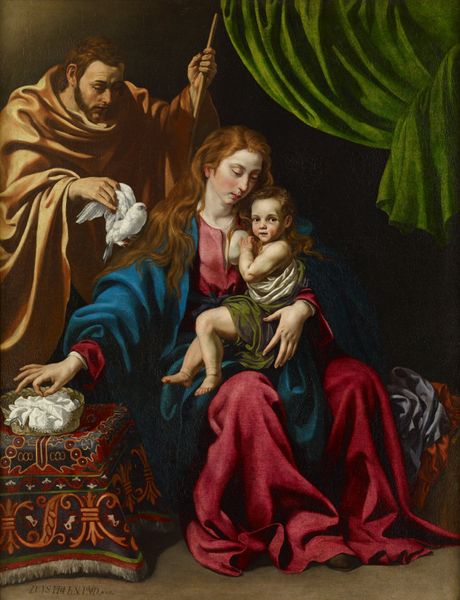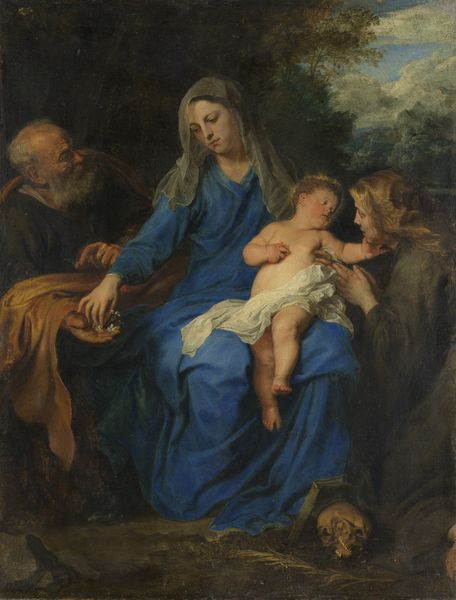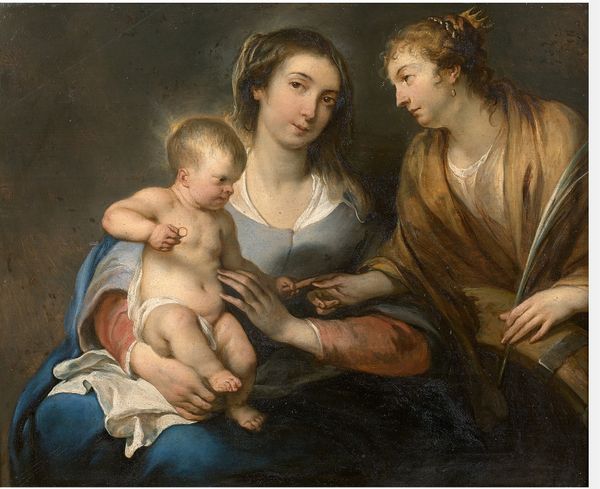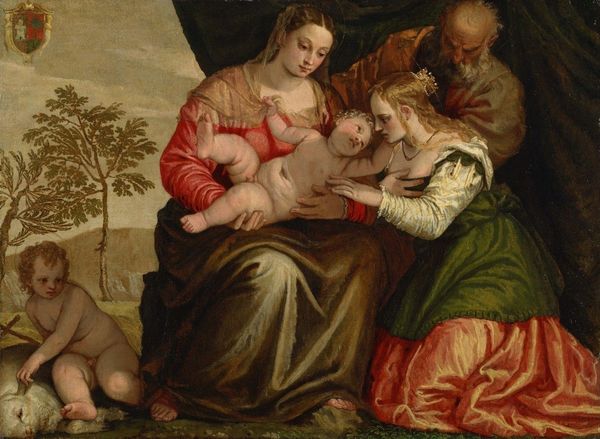
Madonna and Child with the Infant Saint John the Baptist 1570 - 1573
0:00
0:00
painting, oil-paint
#
portrait
#
painting
#
oil-paint
#
figuration
#
madonna
#
oil painting
#
history-painting
#
italian-renaissance
#
portrait art
Dimensions: 40 7/8 x 33 3/4 in. (103.8 x 85.7 cm)
Copyright: Public Domain
Curator: What a placid scene! The colour palette seems to focus attention squarely on the softness of skin, making for a tranquil viewing experience. Editor: Indeed. We are looking at "Madonna and Child with the Infant Saint John the Baptist" by Santi di Tito, created sometime between 1570 and 1573. It's an oil painting currently housed at the Metropolitan Museum of Art. Curator: The composition, particularly the pyramid-like arrangement of figures, really grounds the piece. It invites the eye to wander, but always returns to the Virgin's serene face. It's technically excellent, of course, but also manages to convey this incredible tenderness. Editor: Absolutely. Consider the historical context here; Counter-Reformation Italy heavily promoted the imagery of the Madonna as a symbol of maternal virtue and the sanctity of the family. This image functions not just as a depiction, but also as a potent ideological statement. It was vital in shaping the cultural and religious values of the time. Curator: And yet, while fulfilling the didactic purpose, di Tito manages such a striking effect with his layering of pale hues against that darkness in the backdrop. It imbues what could be just another devotional picture with undeniable emotional resonance. Editor: I agree. One could further explore this work through the lens of patronage. Di Tito flourished during a period when wealthy families often commissioned religious art for private devotion and public display. The style and subject of "Madonna and Child" would surely reflect the specific tastes and agendas of his clientele. Also the question here is, was that artwork intented for public display or for a private customer. This could change completly how we look at the artwork. Curator: Looking at it through this light is indeed fascinating and give another perspective. Ultimately, whatever its original context, the sheer formal artistry—the light, color, and compositional balance—creates a captivating artwork for any age. Editor: Precisely. That’s the power of considering both the socio-political elements as well as inherent visual features— a fuller appreciation arises.
Comments
No comments
Be the first to comment and join the conversation on the ultimate creative platform.
